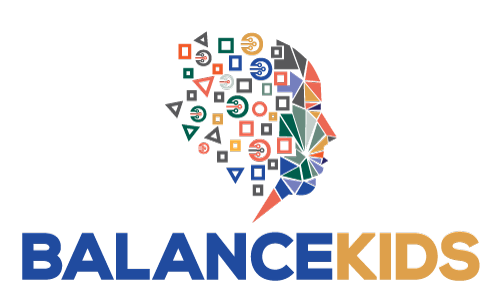It’s been more than two years since the COVID-19 pandemic started, and mental illness and the demand for psychological services are at an all-time high, particularly among children. While some children have benefited from changes such as remote learning, others are experiencing a mental health crisis. Before COVID-19, data from the Centers for Disease Control and Prevention (CDC) revealed that one in every five children seemed to have a mental disorder. Yet, only about 20% of those children received care from a mental health specialist. Whether children are experiencing trauma as a result of child abuse or the loss of a family member, or they are experiencing everyday anxiety due to the virus and unpredictable routines, they require even more support now. At the same time, there is a significant shortage of children’s mental health resources.
In a 2020 survey of 1,000 parents conducted by the Ann & Robert H. Lurie Children’s Hospital of Chicago, 71% said the pandemic had harmed their child’s mental health, and 69% said it was the worst thing that ever happened to their child. According to a national survey of 3,300 high school students conducted in spring 2020, nearly one-third of students felt frustrated and much more depressed than usual.
Before the pandemic, children and adolescents faced severe mental health issues. One in every five children and adolescents had a mental health disorder; unfortunately, approximately 80% of children who needed mental health care did not receive it. Children’s hospital visits for mental health care needs by 6-12-year-olds more than doubled between 2016 and 2019, and the rate of suicide among youth aged 10-24 increased by 60% between 2007 and 2018. These figures are frightening, and the situation has only worsened in the last two years. According to CDC data, mental health-related emergency department visits increased 24 percent for children aged 5 to 11 from March 2020 to October 2020.
More general outpatient care could reduce emergency visits, but children frequently had to wait months for appointments before the pandemic. According to APA data, only 4,000 of the more than 100,000 clinical psychologists in the United States are child and adolescent clinicians. School counselors are also in short supply, leaving children without adequate school support. The National Association of School Psychologists (NASP) advises one school psychologist for every 500 students; current NASP data suggest one for every 1,211 students.
Suicide was the second most common cause for youths aged 10 to 24 in 2018. From 2013 to 2017, the percentage of adolescents in Massachusetts who reported a major depressive disorder increased by more than 22%. Many children with mental health issues were not receiving care before COVID-19, and the pandemic exacerbated an already severe public health problem.
The pandemic has also exacerbated already-existing disparities in mental health care. According to a 2020 technical report from the University of Massachusetts Boston and the University of Massachusetts Amherst, students who needed school-based services the most, particularly those from low-income families, had lower rates of therapists and school psychologists in their districts.
Youth and families faced numerous challenges during the pandemic that impacted their mental health and emotional and social functioning. The pandemic, in particular, caused disruptions in routine, difficulties with online learning, limited interaction with peers, financial stress, ailment and death-related strain, carer mental disorder, and overall increased stress levels. As a result of these challenges, there has been a significant increase in behavior problems, anxiety, depression, eating disorders, substance misuse, suicidal behavior, and psychological wellbeing emergency department visits among children and adolescents.
Before the COVID-19 pandemic, exposure to behavioral health resources and rehabilitation was severely limited, and this situation has only worsened with the increased demand. Families are navigating long waitlists for services; emergency rooms are overburdened with youth requiring inpatient care. Pediatricians have seen an upsurge of pediatric patients who reported mental health concerns and families seeking assistance managing these symptoms.
Even though many kids have gone back to school, vaccines have become readily available, and mask regulations have been lifted, we must remember that the pandemic’s effects will be felt for years. According to research, the mental health fallout from disasters such as the 9/11 attacks and Hurricane Katrina can last up to ten years. For decades, we must find new ways to support our children, adolescents, and their families.
While federal funding has provided funds to schools to support students’ wellbeing, mental health professionals have continually sought long-term measures to resolve the mental health issues that were revealed and exacerbated by the pandemic. These measures may range from incorporating mental health into education curricula to training teachers in psychological science-based prevention strategies to support students.
As COVID-19 enters its third year, the impact on children and young people’s mental health and wellbeing remains significant. According to the most recent UNICEF data, at least one in every seven children has been directly affected by lockdowns, and more than 1.6 billion children have experienced some loss of education. Many young people are afraid, angry, and concerned about their future because of disruptions to routines, education, recreation, family income, and health concerns. For example, according to an online survey conducted in China in early 2020 and cited in The State of the World’s Children, roughly one-third of respondents reported feeling scared or anxious.
While protective factors such as loving caretakers, secure learning environments, and constructive peer relations can lessen the risk of mental illnesses, there may be significant barriers, such as stigma and a lack of funding. These barriers prevent many children from developing positive mental health or receiving the necessary support.
We need to call on governments and public and private sector partners to commit to and act on promoting mental health for all children. Care for the most vulnerable, including investment in child and adolescent mental health, is urgently needed across sectors, not just health, and to support a whole-of-society approach to prevention, promotion, and care. We need to break the silence surrounding mental illness by addressing stigma, promoting a better understanding of mental health, and taking children’s and young people’s experiences seriously.


